 |
Home | Search | Browse | About IPO | Staff | Links |
 |
Home | Search | Browse | About IPO | Staff | Links |
|
From the Revolutionary War through the first quarter of the nineteenth century, many Americans believed that slavery was an evil institution incompatible with the republican ideals upon which the country was founded. During that period most defenders of slavery argued not that the institution was just or good, but only that it was then necessary economically and socially. Few could imagine the southern economy operating efficiently without slavery; fewer still could imagine large numbers of freed blacks living among them. Because of the small number of slaves residing in the North, however, no real obstacles existed preventing emancipation there. Drafted to minimize social disruption, post-nati laws freed children born to slave women after passage of the legislation and only after they could fend for themselves. While unable or unwilling to eliminate slavery, many southern states mitigated some of the harshest features of the institution and also relaxed the rules restricting slave owners' emancipation of their slaves. Thus small numbers of slaves were freed in the South, although, according to those laws, most freed persons were forced to leave their homes and reside elsewhere. Wishing to discourage the extension of slavery where possible, in 1787 the Confederation Congress passed the Northwest Ordinance prohibiting slavery in United States territory north of the Ohio River. Under the new constitution, the United States Congress passed the ordinance making it the official policy of the new government. One might have expected slavery to disappear swiftly from the northwest territories of which Illinois was a part. However, that did not happen for a number of reasons. First of all, many of the region's inhabitants owned slaves or favored the institution and naturally sought to ignore or undermine the clear language of the Northwest Ordinance. Moreover, the territorial governors and other officials, being in agreement with the residents, did little to enforce the ordinance's abolition of slavery. But how did the residents of Illinois maintain the "peculiar institution" where "there shall be neither slavery nor involuntary servitude in the said territory, otherwise than in the punishment of crimes whereof the party shall have been duly convicted"? The answer is found in the territorial and state legislation that undermined the prohibition and established a system of slavery in everything but name. This sleight of hand was accomplished through the registration of slaves with the state as indentured servants. Likewise, contrary to congressional intent, the territorial authorities ruled that any slaves residing in the Old Northwest before passage of the ordinance remained the property of their owners. While such subterfuge benefited slave owners remaining in the region of the Old Northwest, those individuals who had resided there and removed to Missouri often encountered unanticipated legal problems. In 1824 the legislature of Missouri passed a statute giving slaves the right to sue for their freedom with the help of court-appointed attorneys. That same year the case of Winny v. Whitesides, involving a slave held in Illinois and brought to Missouri, was adjudicated before the Missouri Supreme Court. The court ruled that slaves held in bondage contrary to the provision prohibiting slavery in the Northwest Territory were free. This case established the main precedent in freedom suits brought before courts in Missouri for almost thirty years, until overturned in the case of Dred Scott v. Irene Emerson (1852). Because of the court's 1824 decision, many slaves formerly held in Illinois successfully sued for their freedom in Missouri's circuit courts. In Hay v. Dunky (1834), perhaps one of the most revealing cases decided by the court, the slave Dunky had fled to Missouri where she sued for her freedom. It is difficult to imagine a stranger scenario than that of a slave fleeing a free state to gain freedom in a slave state. 2
When in 1818 the territory of Illinois petitioned Congress for admittance as a state into the Union, the legislature drafted a constitution appearing to outlaw slavery, but which really continued the system of indentured servitude and maintained the status of those slaves held there before its adoption. Once Illinois was accepted into the Union, the legislature in 1819 passed legislation to protect and regulate slavery, much of which was similar to the slave codes passed in southern states. Under the law all blacks were presumed to be slaves, placing the burden of proof on them to prove their status as free persons, an unprecedented provision of law in a free state. Those blacks without freedom papers, and unclaimed by someone, were sold at sheriff's auctions to the highest bidder. When in 1822 and 1823, Governor Edward Coles sought to moderate those laws, the supporters of slavery attempted to pass legislation to create a new constitutional convention in which they intended to draft a document establishing slavery. If successful, the proslavery forces within Illinois would then have removed the remaining check upon slavery there. Undoubtedly, the people were no longer bound by the Northwest Ordinance and could do as they pleased. Fortunately, Governor Coles was able to garner enough support to prevent the convention legislation from becoming law. A determined foe of slavery, Coles had left Virginia to emancipate the slaves he had inherited at the death of his father. Leaving behind his family and friends, Cole traveled to Illinois, settling his former slaves on farms where they could take care of themselves and prosper. In retaliation for his efforts to end slavery in Illinois, Cole was prosecuted for having failed to register his former slaves and was fined $2000, not an insignificant amount of money in the 1820s. Most opponents to slavery in Illinois were those who believed that slavery would slow white immigration, thus hindering the state's growth and development. Most of these "exclusionists" also wanted to limit the immigration of all blacks whether slave or free. However, a minority of those opposed to slavery in Illinois believed that the peculiar 3 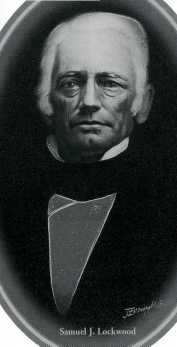
Nevertheless, after the constitutional convention movement was rejected by the voters, the circumstances for most slaves and former slaves changed little. The laws regulating the activities and rights of indentured servants and freed people remained, only changing to strengthen the status of whites over blacks. In the latter part of the 1820s, laws were passed making it illegal for blacks to testify against whites in court and to sue their masters for their freedom. As slavery disappeared from the state, mostly through the death, sale, or emancipation of slaves, the condition of the freed person deteriorated. Despite a law prohibiting kidnapping, white men along the border of Missouri traveled into Illinois to capture blacks and bring them back where they could be sold for profit. Because of the presumption in the courts and society that blacks were slaves, little protection or recourse was available to those unfortunate enough to be stolen in this manner. Without a statute allowing slaves to sue for their freedom and the state to provide representation for them, few cases challenging slaves' status were argued before the Illinois Supreme Court. In a case heard in 1825, Cornelius v. Cohen, Rachel, a free black woman who had served a period of indentured servitude, sued her former master for the freedom of her child Betsey. Without her mother's intervention, Betsey could not have brought suit herself, for she had no access to the legal system otherwise, a circumstance unlike that in the slave states of the time. The court ruled that Betsey was legally free because the indentured-servi-tude contract hold-ing Rachel in bondage for fifteen years had not been properly completed. Thus, Betsey was born to a freed-woman and was legally free. In the December 1828 term of the Illinois Supreme Court— the same term in which indentured servants were declared to be transferable property to be bought and sold like other chattels—a more favorable ruling to blacks was rendered. In the opinion of Judge Samuel J. Lockwood, indentured servitude in Illinois before the ratification of the Illinois constitution in 1818 was repugnant to the Northwest Ordinance of 1787. Therefore, anyone held as an indentured servant under contract from this period was free. However, Lockwood also ruled that persons could be held in this manner after 1818. Not until 1836 did the court rule again in cases concerning indentured servitude. These opinions strictly enforced the constitutional provision ordering all persons bringing indentured servants into Illinois to register them within thirty days or they would become free. The second case ruled that the children of 4 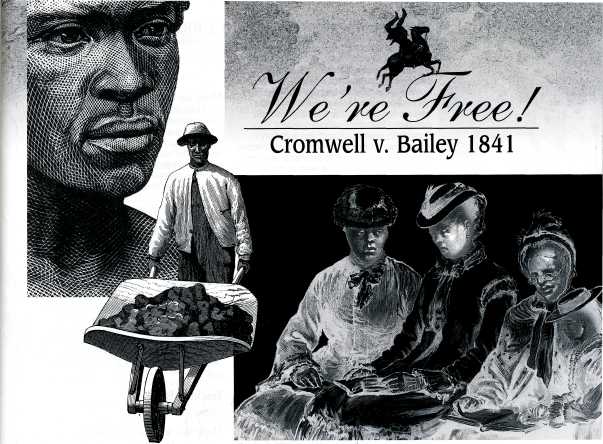 indentured servants could only be held as slaves or otherwise until the twenty-first birthday of the men and the eighteenth birthday of the women. This decision was important for it freed a large number of slaves in Illinois, perhaps as many as 75 percent of those then held in bondage, greatly increasing the momentum toward freedom in the prairie state. Interestingly, a short time later in 1841 a prominent but largely unknown lawyer and Whig politician, Abraham Lincoln, argued a case before the Illinois Supreme Court in which he was able to establish the important precedent that under the Illinois constitution all persons were presumed to be free. This decision in Cromwell v. Bailey tor the first time declared the Northwest Ordinance of 1787 and the Illinois Constitution as effectively ending slavery in Illinois. A series of freedom suits were then adjudicated in the 1840s in which the assumption that all persons in Illinois were free was maintained. Despite those legal victories against slavery, a small number of slaves continued to be held by individuals in Illinois into the 1850s and possibly to the end of the Civil War, although from the available evidence it seems clear that these instances became increasingly rare. While this circumstance was a great advance over Illinois' earlier history, one must remember that there remained many residents who held strong proslavery views, especially in the state's southern region. Moreover, whether proslavery, antislavery, or abolitionist, the vast majority of whites harbored racist views and were unenthusiastic about Illinois being populated by large numbers of blacks. In 1853, reflecting this point of view, the Illinois legislature passed a law forbidding free blacks from immigrating to Illinois, with defiance of the law punishable by a fine of $50. Freed blacks were liable to sale by the county sheriff if they were unable to pay the fine. In 1864 the Illinois Supreme Court ruled that such a sale did not 5 constitute slavery and therefore was not unconstitutional. However, during its next session the Illinois legislature finally repealed the state's black codes. Despite the prejudice of whites against blacks, small numbers of free blacks were able to establish for themselves and their families niches in communities in antebellum Illinois where they could pursue their dreams and prosperity. Perhaps their example in Springfield, where a vibrant and politically active group of free black persons lived, helped to mold the attitudes of some whites to reconsider their prejudices, or at least to modify them in the face of evidence that the stereotypes about blacks were untrue. Their example may have influenced Lincoln's thinking by humanizing the struggles of blacks and leading him to argue for their natural right "to life, liberty, and the pursuit of happiness." It is difficult to imagine Lincoln coming to the conclusion that blacks have the right to benefit from their labors as much as whites without an acquaintance with black fellow townspeople, some of whom he had employed as housekeepers or with whom he had conducted other business. Moreover, it seems unlikely that the history of Illinois and the nation would have unfolded similarly if the conventionists had succeeded in establishing a proslavery constitution in the early 1820s. Instead, with Illinois a slave state, the South might have gained an advantage in national politics over the North, changing the history of the republic. Under those circumstances it is difficult to conceive of a scenario in which Lincoln as an antislavery candidate could have challenged Stephen A. Douglas for his Senate seat in 1858, or become a presidential candidate in 1860. Indeed, it seems very probable that with its greater political strength in the Congress, little popular impetus for secession in the South would have existed. If so, the country might have avoided civil war, or at least postponed it. While the Civil War generation would have avoided great carnage and suffering, another less desirable consequence would have been the longer continuance of the institution of slavery in the South. Beyond this it is difficult to know what course events would have taken beyond recognizing that our history would probably have followed a much different path.  Maria Schrup Peterson Overview Main Ideas Most students in Illinois history classes and in general American history courses come to believe that slavery simply did not exist in free states or that no free blacks lived in the South. The narrative portion of this article is an excellent basis for students to explore the essential question of why slavery was allowed in Illinois when Illinois was a free state, and all of the questions that could be generated from that inquiry. Exercises ranging from simple reading comprehension to those requiring the use of analysis, interpretation, and synthesis will benefit students in studying this most interesting and perplexing topic. Connection with the Curriculum The exercises below would be useful in United States history, Illinois history, United States government, and historical problems courses. It is especially appropriate for advanced placement United States history courses. The activities may be applicable to the following Illinois Learning Standards: 14.D; 14.D.5; 14.F.5; 16.B; 16.D; 16.D.4.b; 16.D.5; and 18.B. Teaching Level Grades 10-12 Materials for Each Student -- A copy of the narrative portion of this article -- K-W-L chart -- Post-It notes -- A copy of the pathfinder included in the activities -- Access to a computer with search engine capabilities -- Access to a printer -- Poster paper and markers -- Access to dictionaries 6 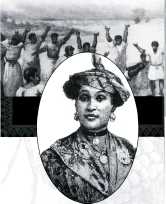 Objectives for Each Student -- To understand why slavery was allowed in the free state of Illinois -- To understand the role that territorial legislatures and court decisions had in making slavery a viable institution in southern Illinois -- To research the topic on selected web sites in order to find other articles with other perspectives and more information on the topic -- Analyze and interpret primary documents regarding the topic -- Synthesize the narrative portion of this article, the primary document, and research article in order to write an effective answer to the essential question: Why and how did slavery exist in Illinois?  Opening the Lesson The teacher should open the theme of slavery in Illinois by asking two essential questions as "bell-ringers" by which to interest students. The first question should be, Did slavery ever exist in Illinois, a free state? The discussion that follows should serve as a segue to ask the question that the series of exercises will attempt to answer. The question is: If slavery existed in the free state of Illinois, why did the territorial and then later state legislatures not allow it? And why didn't the courts stop it? Developing the Lesson -- The K-W-L chart in Handout 1 will help to implement the discussion and the focus of the unit. First show the chart on an overhead and explain its uses. Students should put as many things as they know under K and after the main questions posited, write those under the W column. -- Handout 2 explains the search process and related assignments for how they pertain to the issue of slavery in Illinois. This handout includes the pathfinder that students will need to conduct an orderly search for documents and articles. -- Handout 3 is a reading exercise to promote understanding of the narrative portion of the article by use of a classroom vocabulary exercise culminating in individual vocabulary assignments for each student. -- Handout 4 details the synthesis of all of the exercises in order to answer the question, Why, how, and to what extent did slavery exist in Illinois? Students will have to use their article summary, document interpretation, and notes from the narrative portion of this article in order to write an essay answer to that question Concluding the Lesson The instructor should utilize a K-W-L chart along with students to fill out the L portion of the chart and facilitate a discussion of what students learned from the lessons. Extending the Lesson Using the pathfinder, have students do a Google search to find an image, primary document, or political cartoon that adequately reflects what they learned about slavery in Illinois. Then have the students write a reflective piece explaining why the picture captures what they learned. Assessing the Lesson Grades can be given for each activity, including those noted in the Concluding the Lesson and Extending the Lesson sections. Completion of the K-W-L chart, summary of the web article, interpretation of the primary document, completion of the vocabulary assignment, completion of the poster and essay answer for the last activity all can be graded with a variety of rubrics. 7 
Opening the Lesson 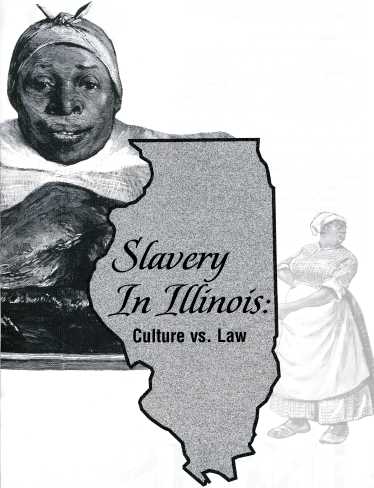 Exercise # 1 Objective: To use the K-W-L learning method in order to start the exploration of the topic of slavery in Illinois. Directions: Show the chart K-W-L chart below on an overhead and explain the steps of K-W-L and the basic outline of the project as follows: The K-W-L chart is a graphic tool designed to help us organize ourselves as we go through the process of learning. We will utilize the chart during four phases of learning as follows: Developing, Concluding, and Extending the Lesson -- The first step is to list what we know already about the topic of slavery in Illinois. -- The second step is to state some of the things we should know about slavery in Illinois. For this particular assignment we will go through these steps (K and W) three times, once as we begin our unit; once after we do a web-based research exercise on the topic of slavery in Illinois; and once after we read the article "Slavery in Illinois: Culture vs. Law." -- The third step is to list under (L) what we have learned from both our research and from the article. -- The final step is to write an essay explaining what we learned. 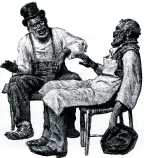 Students will complete four exercises students to accomplish these goals. Assessing the Lesson -- Assessment rubrics will be used for each of the 4 exercises
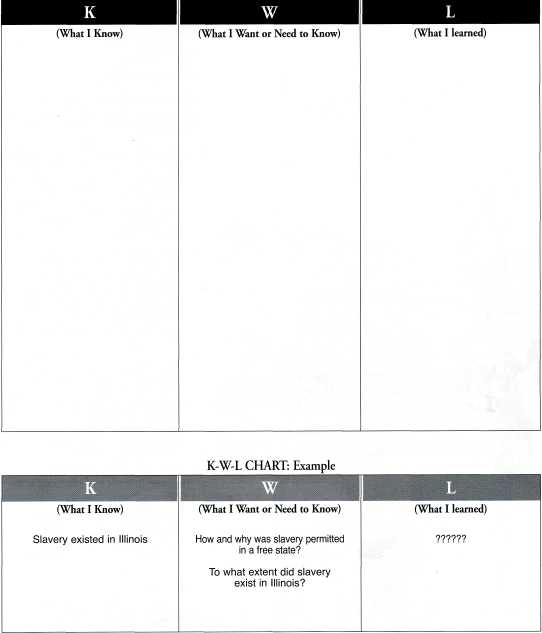 9 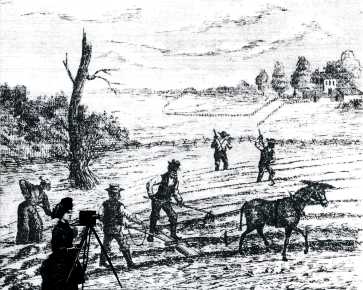  This is the direction sheet for each clay's activities. These activities include the following: Opening the Lesson Developing the Lesson Concluding the Lesson Extending the Lesson Assessing the Lesson Opening the Lesson 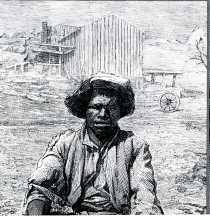 Activity 1: Learning the K-W-L and Description of Expectations of Unit 1. Open the lesson with the essential question we are exploring for the unit. Here, the teacher will hook the class by asking if Illinois was a slave or a free state. When a student responds that it was a free state, the teacher will reply with the question, "If Illinois was a free state, how, why and to what extent did slavery exist in Illinois?" 2. This question will serve as a segue to the introduction on how to use the K-W-L chart. Here, the teacher will put the empty K-W-L chart on the overhead. The teacher will demonstrate how to use that chart and will explain what students will be doing with the chart both after the Web exercise and after the reading of "Slavery in Illinois: Culture vs. Law." 3. Then the teacher will display the example chart to demonstrate that the students will start with a very limited amount of knowledge, will be generating questions for what they want to know, and later will record what they have learned. 4. Ask students if they have any questions to check for understanding. 5. Show some primary documents pertaining to slavery in Illinois for visual "proof" of the fact. 6. Describe each activity that will take place during the project and provide materials. 10
1. Students will use a pathfinder (series of Web links included in the Teacher Materials on the next three pages) to search for an article on-line specifically dealing with slavery in Illinois. 2. Students will also use the pathfinder to look for a primary document that would represent their article, the issue of slavery in Illinois, or slavery in free states. 3. The teacher will assist students in their search. In addition, when more Web-savvy students finish and print off their documents, have them help those having trouble finding articles in their search. 4. Once students finish their search, they will write a summary of the article and will discuss the interpretation of the primary document within the summary, reflecting on how it connects with their article, the issue of slavery in Illinois, or slavery in free states.  5. Students will create posters based on their summaries. They need to: Write (with large lettering) a paragraph highlighting what the article was about. Paste the primary document to the poster with the interpretation written below it. 6. Students will form a circle with their desks and tape their posters to their desks so everyone can see them. Students will have their notebooks in front of them with a title at the top of the page stating "What I learned about slavery in Illinois or in free states." Students then will share round-robin style what they each learned from their articles and primary documents. As each presenter speaks, the other students need to take notes on what they learned from the presenter about the topic. 7. Students will each get a K-W-L template and will list the information they learned both from their own articles and from each other in the L column. (Have several sheets available in case they run over.) Internet Sources Illinois State Library. The Slavery Question in Illinois. Illinois Anti-Slavery Convention [1838], Proceedings of the III. Anti-Slavery Convention: Held at Upper Alton on the Twenty-sixth, Twenty-seventh, and Twenty-eighth October, 1837 (Alton, IL: Parks and Breath) Permission: University of Chicago [IIAntiSlav].  Slavery In Illinois Jarrot v. Jarrot by Vincent J. Lopinot Born in Slavery: Slave Narratives from the Federal Writers' Project, 1936-1938 contains more than 2,300 first-person accounts of slavery and 500 black-and-white photographs of former slaves. 11 Negro Slavery in Illinois By Hon. John P. Hand (Story condensed) Slave Counties in 1824 Illinois. "The Story Of Illinois And Its People" by O. P. Barnes © 1913 The Underground Railroad. Historical Encylopedia of Illinois, 1901 The Governors of Illinois & Their Wives and Histories. Look for Edward COLES Underground Railroad. Black Laws. The Underground Railroad in Sangamon County  Old Slave House Black Kidnappings in the Wabash and Ohio Valleys of Illinois African-American Experience and American Racial Attitudes By Drew E. VandeCreek, Ph.D. Lincoln's First Inaugural Address A House Divided by Abraham Lincoln Lincoln-Douglas Debates. Analysis First Lincoln-Douglas Debate, August 21,1858. Full Text. Defending emancipation: Abraham Lincoln and the Conkling letter, 1863; Guelzo, Allen C. Civil War History 12-01-2002
12  Dred Scott v. Sandford (excerpts) African American Voices. Ordered by chronology and topic The experiences of African Americans in Bloomington-Normal  Struggles over Slavery: The Compromise of 1850 President Millard Fillmore's Defense of the Compromise of 1850 2 December 1850 Kansas-Nebraska Act (1854) Dred Scott's fight for freedom 1846 - 1857 Dred Scott Image Washington University: The Dred Scott Case American Slave Narratives: An Online Anthology. From 1936 to 1938, over 2,300 former slaves from across the American South were interviewed by writers and journalists under the aegis of the Works Progress Administration. These former slaves, most born in the last years of the slave regime or during the Civil War, provided first-hand accounts of their experiences on plantations, in cities, and on small farms. Their narratives remain a peerless resource for understanding the lives of America's four million slaves. Transcripts and sound files are available. 13
1. Place students into groups of three. Provide each group with a set of "sticky notes," such as Post-it notes. 2. Discuss the importance of vocabulary when it comes to reading comprehension. Explain that the misunderstanding of one word can give a document an entirely different meaning. For example, if a student did not understand what the word segregation was similar to congregation, they may think it means the coming together of a group of people. 3. Have students divide into groups of three. Give each group the article and three highlighters. Have a dictionary available for each group. 4. Students will read the article and highlight all of the words that they do not understand. 5. After reading the article, students together will list each word highlighted on a Post-it note. 6. Have one group list across the board all the words the group did not understand. Then have the other groups stick a Post-it under every word that they also had highlighted. Have students from each group add to the list of words printed across the board. 7. Students will then write down the entire list on the board and in their groups look up the meaning. They will be required to write one sentence using each word and turn it in. 8. Have a round-robin discussion of each word on the list to check for understanding. 14
1. Have students read the narrative portion of this article: "Slavery in Illinois: Culture vs. Law." 2. Students will take notes on the article, listing information that they did not previously know in regards to the topic in the (L) portion of the K-W-L chart. 3. Students will write an essay answer to the essential question, Why, how and to what extent did slavery exist in Illinois? The students must synthesize the information they learned from the research article, the primary document, the other students, and the narrative portion of this article into the essay. 15 |
|
|